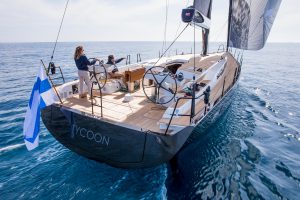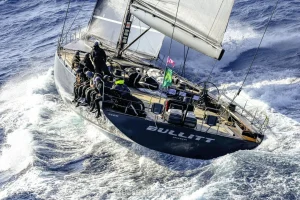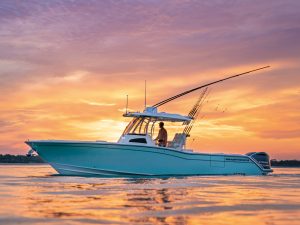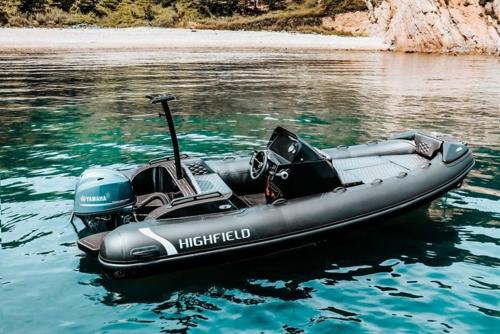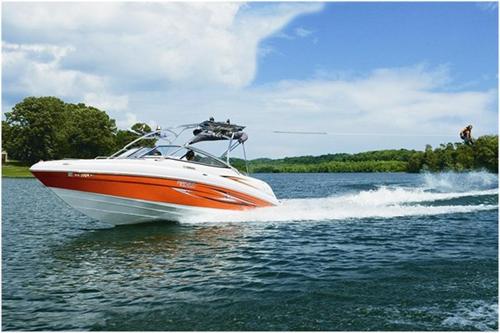Rigid Inflatable Boats: Essential Features and Practical Uses
Rigid Inflatable Boats (RIBs) are a popular choice among boating enthusiasts due to their unique combination of performance, durability, and versatility. These boats are characterized by their rigid hulls and lightweight inflatable collars, resulting in increased buoyancy and stability compared to traditional boats. Known for being an excellent form of tender, RIBs have made a significant impact on the recreational and professional boating industry since their invention.
One of the notable aspects of RIBs is their adaptability across various water conditions. They are often used in a wide range of activities, from leisure cruising to search and rescue missions, thanks to their ability to navigate rough waters with ease. The use of high-quality materials, such as aluminum or fiberglass for the hull and heavy-duty PVC or Hypalon for the inflatable tubes, contribute to the RIB's resilience and low-maintenance requirements.
Several renowned manufacturers, like Zodiac Nautic, Highfield Boats, and BRIG USA, have contributed to the growth and evolution of the RIB market by offering a diverse range of models catering to different needs and preferences. As the RIB industry continues to expand, it provides boat enthusiasts with innovative solutions for a safer, more enjoyable on-water experience.
History of Rigid Inflatable Boats
Rigid Inflatable Boats (RIBs) are lightweight, high-performance watercraft featuring a solid hull combined with inflatable side tubes for added stability and buoyancy. The modern RIBs, as we know them, have evolved over time and have origins dating back to the early 20th century.
The development of inflatable boats can be traced back to thousands of years, where ancient civilizations used buoyancy principles to create basic flotation devices. But it wasn't until the 20th century that these boats started to take a more recognizable form as RIBs (RIBstore.co.uk). The two World Wars highly contributed to the evolution of inflatable boats. They were used for military purposes, such as air-dropped life rafts and coastal patrol vessels. During World War II, the limitations of traditional inflatable boats became more evident, leading to the idea of combining rigid hulls with inflatable tubes to improve performance and stability.
Over the years, various manufacturers and designers have contributed to the development of RIBs(Wikipedia). One significant figure in the RIB industry is Piero Formenti, the founder of Zar Formenti, an Italian company producing rigid inflatable boats since 1992(YachtWorld). In 2009, Formenti brought his boats to the United States, further popularizing the RIB market. The rise in popularity of RIBs has led to their widespread use in various sectors, including recreational boating, search and rescue operations, and even for transportation of goods and people.
Today, RIBs are appreciated for their versatile capabilities, sleek design, and performance in different sea conditions. The V-shaped hulls of RIBs enhance their speed and stability, making them suitable for rough weather conditions and various practical applications(BRIG USA). As technology continues to advance, the future of RIBs looks promising with further improvements and innovations.
Design and Construction
Rigid Inflatable Boats (RIBs) are known for their exceptional stability, smooth ride, and good handling. The design and construction of these boats play a crucial role in achieving these characteristics. Key elements that contribute to RIBs' superior qualities are the materials used and the engineering behind them.
One of the most important decisions when building a RIB is choosing the correct material for the tube construction. Many RIB manufacturers, such as Tornado Boats, opt for Polyurethane (PU) fabric for tube construction, as it is known for its durability, abrasion resistance, and longevity in comparison to other materials.
When it comes to the hull, some RIBs are constructed using aluminum, as seen with Specmar Aluminum RIBs. Aluminum hulls are lightweight, durable, and resistant to corrosion, making them a great choice for RIBs.
Design and engineering also play a significant role in the performance and safety of RIBs. Some manufacturers, like Outborn Watercraft, focus on superior design, engineering, and styling to create RIBs that cater to various markets, including commercial, military, leisure, and individual use.
Additionally, self-bailing decks are often featured in RIB construction, allowing water that enters the boat to be easily drained out. This feature enhances safety and convenience for the users.
In summary, Rigid Inflatable Boats offer exceptional stability, smooth ride, and handling thanks to their carefully selected materials and thoughtful engineering. By prioritizing factors such as tube and hull construction, self-bailing decks, and overall design, RIBs continue to be sought-after vessels in different maritime environments.
Types of Rigid Inflatable Boats
Rigid inflatable boats, also known as RIBs, are a popular choice for versatile watercraft options, providing stability, comfort, and maneuverability. In this section, we will explore a few common types of RIBs that cater to different user preferences and use-cases.
One popular type of RIB is designed for recreational use, focusing on comfort, style, and function. An example of this type is the Zodiac Medline 9, which offers a large sleeping cabin and spacious relaxation areas. Ideal for spending a day on the water with family and friends, these recreational RIBs often come with a variety of seating options and storage compartments for a comfortable boating experience.
Another category of RIBs is those designed for professional or commercial use, such as those manufactured by Ribcraft USA. These RIBs prioritize durability and functionality, often with deep V-hulls to withstand rough waters or serve as a rescue, military, or first responder vessel. Additional features may include reinforced materials and storage capabilities to accommodate necessary equipment and supplies.
Lastly, RIBs can be designed for sports and racing purposes, offering higher speed and performance capabilities compared to recreational or professional models. These RIBs likely utilize a lighter construction and powerful engines that allow them to reach top speeds while maintaining stability and maneuverability during high-speed racing and water sports.
In summary, Rigid Inflatable Boats come in various types tailored to meet the specific needs and preferences of their users. These versatile watercrafts offer a range of options, such as recreational, professional, and sports-focused models, ensuring there's a suitable RIB for everyone's unique boating desires.
Applications
Rigid Inflatable Boats (RIBs) have numerous applications due to their lightweight, high-performance, and high-capacity design. As they offer stability, speed, and seaworthiness, various industries and professionals use these boats for diverse purposes.
Some of the main applications of Rigid Inflatable Boats include:
- Marine rescue operations: Due to their stability, speed, and maneuverability, RIBs are often used by coast guard and search and rescue teams for emergency situations, where rapid response and adaptability to varying sea conditions are crucial. Wikipedia provides a valuable overview of RIB features that suit rescue operations.
- Military and Law Enforcement: RIBs are used by military and law enforcement agencies, such as the United States Navy, for their ruggedness and responsiveness. They serve various purposes including coastal patrols, anti-piracy missions, and providing security to ports and harbors. Companies like Willard Marine help supply RIBs specifically designed for such organizations.
- Oil and Gas Industry: Rigid Inflatable Work Boats are used in the oil and gas industry for offshore operations. They assist with crew transport, maintenance tasks, and safety inspections. Firms like ASIS Boats manufacture workboats tailored to the specific requirements of this sector.
In addition to these applications, RIBs also cater to the following domains:
- Recreational Activities: RIBs are widely used in water sports and recreational boating due to their fun, sporty nature, and reliability. They are suitable for activities such as fishing, diving, and water skiing.
- Commercial Boating: RIBs find applications in commercial boating businesses, such as eco-tours, coastal excursions, and transport services. Their versatility and capacity make them an ideal choice for these industries.
Maintenance and Safety
Rigid Inflatable Boats (RIBs) require regular maintenance to keep them in optimal condition and ensure their longevity. A key aspect of maintaining a RIB is to clean it regularly, especially if it's used in saltwater, as this will help preserve its appearance and prevent corrosion.
Another critical maintenance step is to routinely inspect the inflatable tubes for any signs of wear, tear, or damage. Repairing minor issues as soon as possible can prevent them from becoming more severe and costly problems.
When it comes to safety, it's essential to adhere to the RIB's weight capacity and ensure that there are no obstructions on walkways. Sirocco Marine recommends keeping walkways clear of guests and gear if possible, as this allows for easy movement and reduces the risk of accidents.
Additionally, RIB operators should always be aware of channel markers and navigational aids in the water to avoid dangerous situations or collisions with other vessels.
Proper safety equipment is crucial when operating a RIB. The NRS gear checklist suggests including items such as life jackets, throwable flotation devices, first aid kits, and signaling devices on board during trips. This ensures that, in case of an emergency, appropriate resources are readily available.
In summary, maintaining a RIB involves regular cleaning, inspecting the inflatable tubes, adhering to weight capacity, and keeping walkways clear. Safety precautions include being aware of navigational aids, carrying appropriate safety equipment, and ensuring that all passengers follow standard safety practices.
Conclusion
Rigid Inflatable Boats (RIBs) have become increasingly popular due to their versatility, ease of storage, and affordability compared to traditional boats (Anchor Travel). They are available in various sizes and types, with open or enclosed wheelhouses and options for outboard motors or inboard engines with propellers or waterjets (ScienceDirect Topics).
Thanks to their lightweight design and excellent maneuverability, RIBs are an excellent choice for navigating tight waterways and engaging in a variety of on-water activities (Daily Boats). RIBs were initially developed by the Royal National Lifeboat Institution (RNLI) in 1964 as a means to reduce wear and tear on the fabric bottoms of existing inflatable inshore lifeboats (Wikipedia).
When choosing a RIB, other factors to consider are durability and the boat's performance in various water conditions. Rigid hulls combined with inflatable buoyancy tubes and features like inflatable I-beams along the floor can aid in tackling both calm and choppy waters (J.D. Power). To ensure the longevity of your RIB, it's essential to select one built with quality materials and construction methods.
In conclusion, Rigid Inflatable Boats provide an attractive alternative to traditional boat designs, offering versatility, affordability, and easy handling. Their increasing popularity indicates a growing appreciation for these unique vessels, making them well worth considering for boating enthusiasts and new boaters alike.

